Eric Lawrence and Jeremy Beasley represent a team of 30+ researchers, strategists, and designers at Intentional Futures. Born from the Bill & Melinda Gates Foundation, their work reveals insights and strategies for problems we face in healthcare, gender equality, and more.
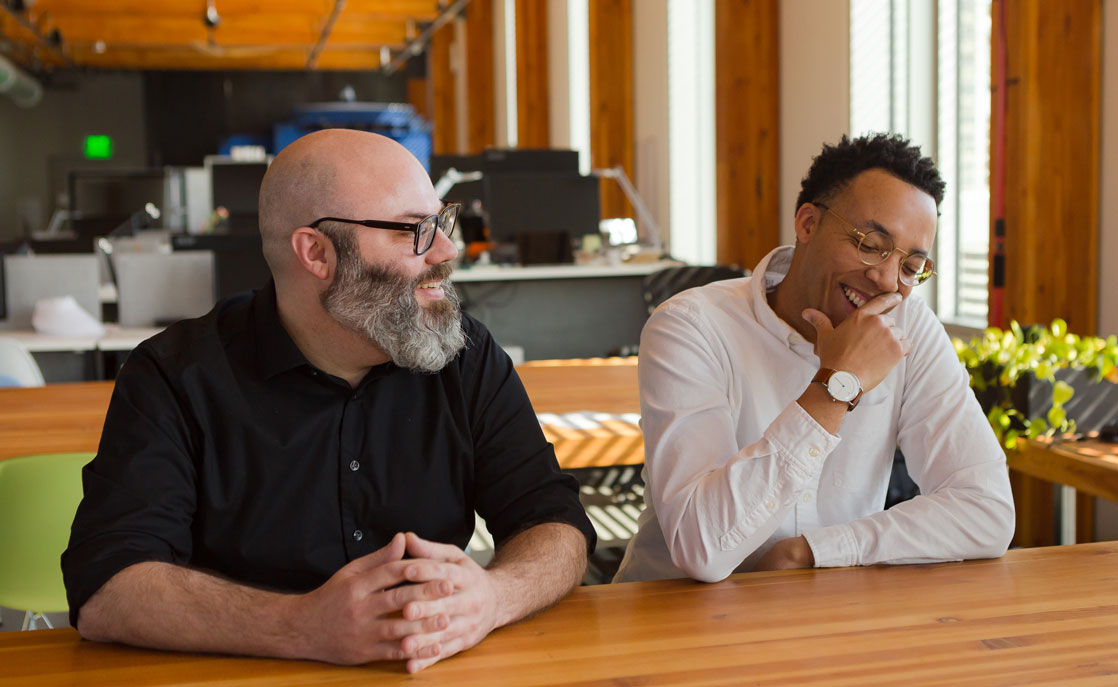
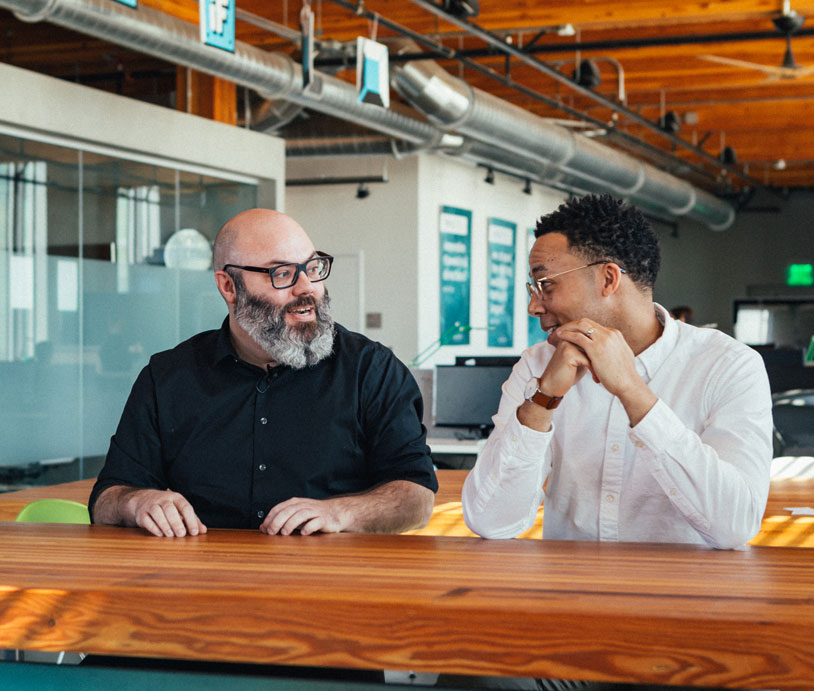
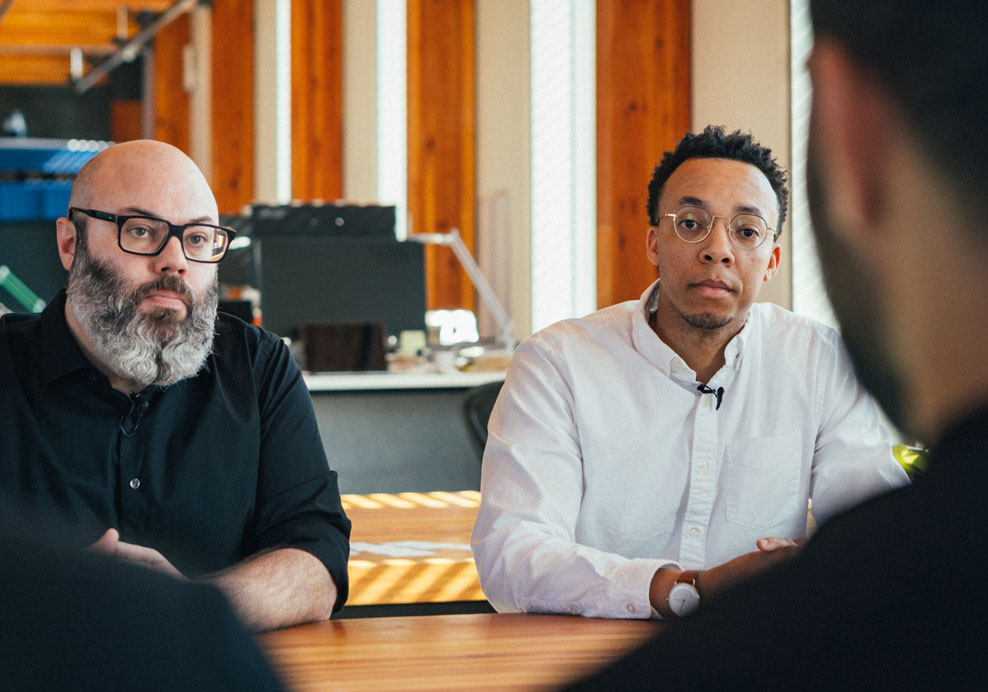
Understanding what the client's hopes and dreams are and being able to speak that language back to them. It allows us to push them a little bit. — JEREMY
Intentional Futures created a collaborative strategic plan to diversify resources for KEXP, while also maximizing their impact on supporters, musicians, and the broader music ecosystem.


The radio station is actually one of the cooler spaces in town. They have a great coffee shop in there and a music store. — ERIC
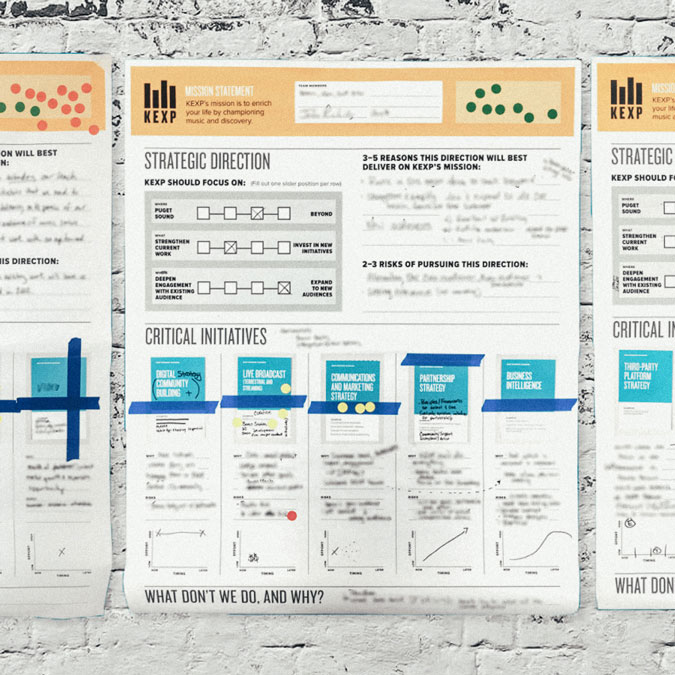
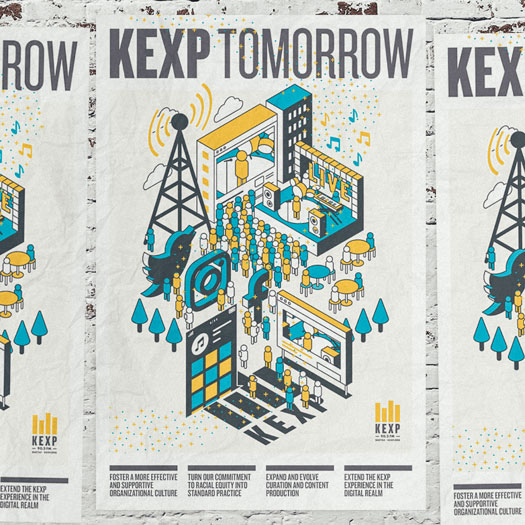
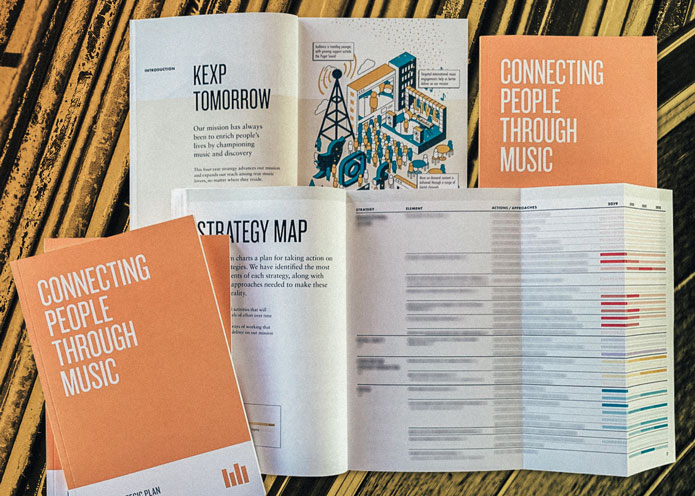
It's not the graphic design you think of when you think of movie posters, but it's rapidly iterating complex ideas through charts and data visualizations. — ERIC
Getting in a room and riffing and iterating with other creatives, those are my best days. — ERIC
Understanding what the client's hopes and dreams are and being able to speak that language back to them. It allows us to push them a little bit. — JEREMY
Intentional Futures created a collaborative strategic plan to diversify resources for KEXP, while also maximizing their impact on supporters, musicians, and the broader music ecosystem.
Getting in a room and riffing and iterating with other creatives, those are my best days. — ERIC

00:00:06 (6 seconds)
JEREMY: I'm Jeremy Beasley and I'm a UX director here at Intentional Futures.
00:00:11 (11 seconds)
ERIC: I’m Eric Lawrence, I'm a Creative Director here at Intentional Futures.
00:00:15 (15 seconds)
ERIC: Two-thirds of this company are research and strategists. Then, design is sort of this facilitation tool that helps access into those, those kind of strategy projects.
00:00:23 (23 seconds)
JEREMY: Sort of two different nuclei, I would say — one probably more traditionally associated with communication design, graphic design, et cetera, and then another nuclei around more product design that we've been doing more recently.
00:00:38 (38 seconds)
ERIC: We had done a lot of previous work with Concur, and one of the people from that Concur work was now on the board of directors at KEXP — they are sort of the Seattle local radio station. Because they're a nonprofit, they're all genuinely passionate about the role of bringing music to the, you know, the culture around them. It also aligned with a 10 million dollar grant, and they have that great new space over by the space needle.
00:1:03 (63 seconds)
ERIC: Jessica Lee, who was our strategy role on that, and pretty much ran that project, was over there all the time; and getting to talk with them in the beginning, it made me realize that they're more like curators at a contemporary art museum or something. It took a ton of time to talk to all of those people and make sure they felt heard, make sure they were heard, so that when we start shaping that into strategic directions they see themselves in the decision making.
00:01:28 (88 seconds)
JEREMY: Understanding what their hopes and dreams are and being able to speak that language back to them, that allows us to kind of push them a little bit. It allows us to advocate for ideas that are more risky.
00:01:41(101 seconds)
ERIC: It's the idea to rapidly iterate complex ideas through charts, through data visualizations, through just like customer journey maps that reduce thoughts to some simpler iconography, things like that. Like, expressing those things along the way, through the process, helps you get at it quicker and summarize and synthesize really fast.
00:01:58 (118 second)
ERIC: I get energized about that: getting in a room and riffing with other creative people, of that cycle of iteration. Like, my best days are when I get to go in a room and do that for a few hours.
00:02:09 (129 seconds)
JEREMY: That choice of forum, at least for me in the technology standpoint, was really important. Those are non trivial decisions and they have consequences; especially given, sort of, the ubiquity of tech. But hopefully designers are being responsible in their choice of form, and they're holding people accountable to what the intended outcomes of what that form should be as well.